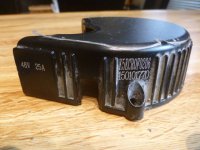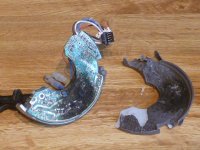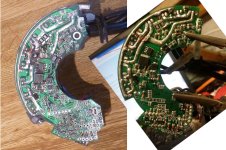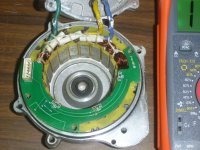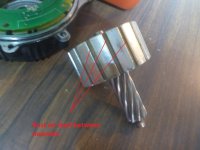Hello everyone, I have had a BBS02 750 watt drive on my bike for a little over a year. Code on the housing indicates it was manufactured in January 2015. It is the 25 amp version with 9 mosfets. Total mileage on the motor/controller was just over 2000 km.
A few days ago I washed the bike with a hose and water. I did my best to avoid directly spraying the motor and components. A day later I took the bike for a spin. Curiously the display gave an Err 12 code when pressing the pedal assist button on the throttle. (This was the first time I ever received an error code) Shutting off the battery and restarting would cause the error code to clear. After the ride, I put the bike in my garage however forgot to turn the battery off. The next day I was working in the garage and heard the motor making sizzling/crackling sound and saw a puff of white smoke, then no more sizzle. This is when I realized that I had not turned the battery off.
Today following instructions on this board and elsewhere, I disassembled the motor and dug the controller out of the housing. Pictures are of what I found. I think my only option is to buy a new controller, however would like to avoid a similar fate in the future. So what does everyone think? Was it likely water in the housing that caused the damage? Strangely I didn't find any water in the housing when I disassembled.
A few days ago I washed the bike with a hose and water. I did my best to avoid directly spraying the motor and components. A day later I took the bike for a spin. Curiously the display gave an Err 12 code when pressing the pedal assist button on the throttle. (This was the first time I ever received an error code) Shutting off the battery and restarting would cause the error code to clear. After the ride, I put the bike in my garage however forgot to turn the battery off. The next day I was working in the garage and heard the motor making sizzling/crackling sound and saw a puff of white smoke, then no more sizzle. This is when I realized that I had not turned the battery off.
Today following instructions on this board and elsewhere, I disassembled the motor and dug the controller out of the housing. Pictures are of what I found. I think my only option is to buy a new controller, however would like to avoid a similar fate in the future. So what does everyone think? Was it likely water in the housing that caused the damage? Strangely I didn't find any water in the housing when I disassembled.


